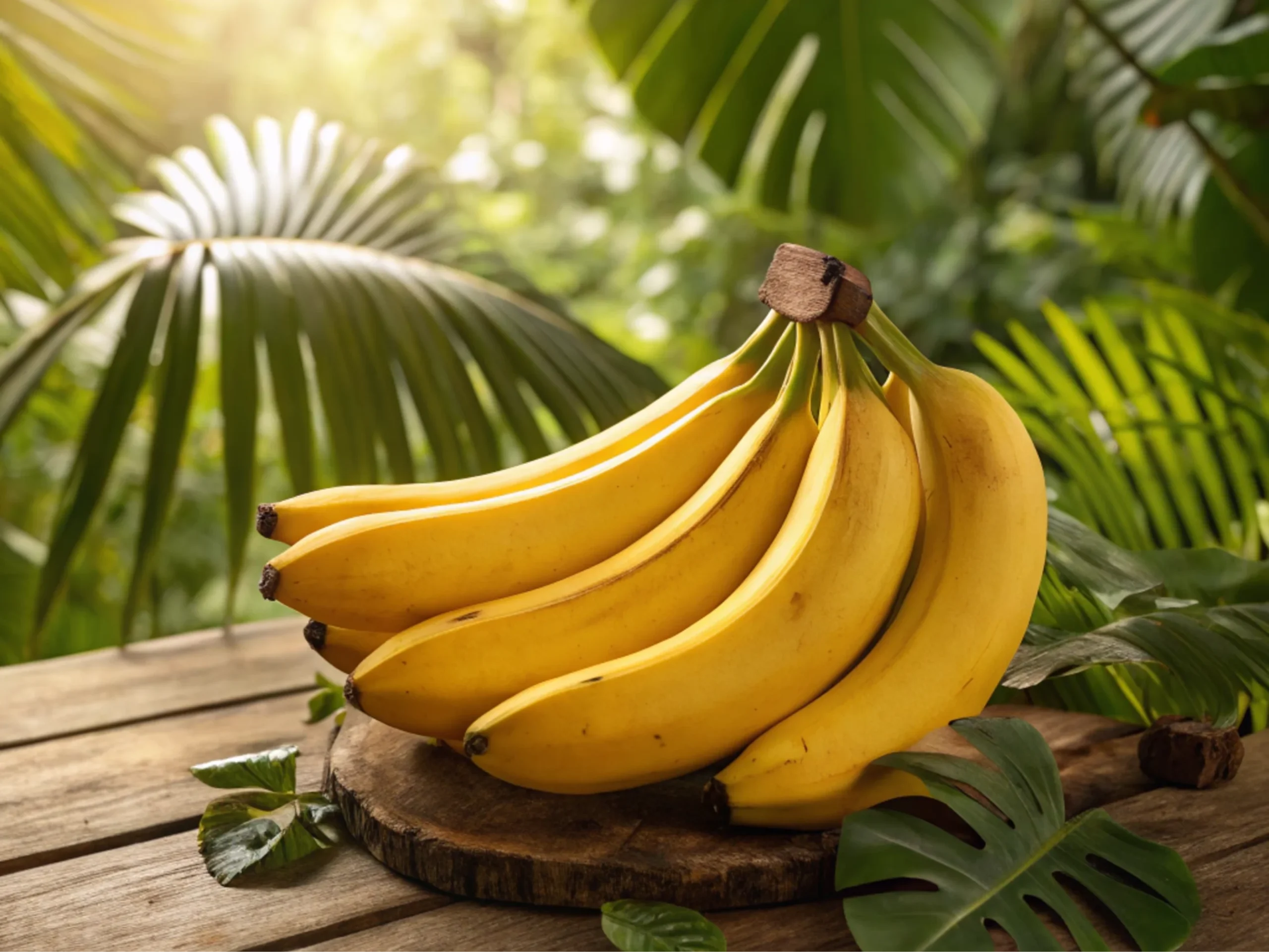What is Hawaii banana? Hawaii bananas are much more than a snack; they are a unique and versatile tropical fruit deeply connected to Hawaiian culture and cuisine. Smaller, sweeter, and more flavorful than your typical supermarket bananas, Hawaii bananas have captured the hearts of locals and visitors alike. Whether you’re a food enthusiast, a lover of tropical fruits, or curious about Hawaiian culture, this guide will uncover everything you need to know about Hawaii bananas.
For more tropical-inspired recipes, cultural insights, and culinary tips, explore Zoetasty, your go-to source for all things delicious and creative. From their varieties and culinary uses to their remarkable taste and nutritional benefits, Hawaii bananas offer an unparalleled experience. Let’s dive into what makes them so special.
Table of contents
What Is a Hawaii Banana?
Hawaii bananas refer to a group of banana varieties grown in Hawaii, celebrated for their unique flavors, vibrant appearance, and cultural significance. Unlike the common Cavendish banana, which dominates global markets, Hawaii bananas offer a richer, more nuanced taste profile and a firmer, creamier texture. They play a vital role in Hawaiian cuisine, adding a tropical flair to both traditional and modern dishes.
Key Characteristics of Hawaii Bananas
- Size and Appearance: Hawaii bananas are smaller and often have a more curved shape. Their vibrant yellow peel sometimes features brown spots when ripe, signaling peak sweetness.
- Taste: Known for their natural sweetness, some Hawaii banana varieties also have subtle hints of apple or citrus, making them a unique treat.
- Texture: Creamier and less fibrous than traditional bananas, Hawaii bananas are perfect for eating raw, blending into smoothies, or incorporating into desserts.
These qualities make Hawaii bananas an essential ingredient in Hawaiian cuisine and a must-try for fruit lovers everywhere.
Varieties of Hawaii Banana
Hawaii is home to several exceptional banana varieties, each with its own flavor and culinary applications. Here are three of the most notable ones:
1. Apple Bananas (Maiʻa Apple)
Apple bananas, or Maiʻa Apple, are among the most popular varieties in Hawaii. These small, sweet bananas are beloved for their slightly tangy, apple-like flavor. They are ideal for snacking and often featured in tropical fruit salads or paired with creamy dips.
2. Hua Moa Bananas
Hua Moa bananas stand out for their size and starchy texture. They are larger than other varieties and are often used in cooking rather than eaten raw. Their mild, tangy flavor makes them an excellent choice for frying, grilling, or baking.
3. Gros Michel Bananas
Once the world’s most popular banana variety, Gros Michel bananas have a rich history. Though they are now harder to find, they remain a cherished variety in Hawaii due to their creamy, almost custard-like texture and nostalgic flavor.

To further explore tropical recipes inspired by Hawaiian ingredients, check out the Cornbread BBQ Sandwich guide, which highlights the creative ways local flavors are integrated into unique dishes. The use of Hawaiian bananas is just one way that local cuisine reflects the richness of the islands’ natural bounty.
Culinary Uses of Hawaii Banana
Hawaii bananas are incredibly versatile, making them a prized ingredient in both sweet and savory dishes. Their unique flavor and texture enhance a wide range of recipes, from simple snacks to elaborate desserts.
Fresh Usage
Eating Hawaii bananas fresh is one of the best ways to enjoy their natural sweetness. They are perfect as a standalone snack or sliced into fruit bowls for added flavor. Apple bananas, in particular, pair wonderfully with peanut butter, yogurt, or granola for a quick and nutritious treat.
Baking with Hawaii Bananas
Hawaii bananas are a game-changer in baked goods. Their natural sweetness reduces the need for added sugar, while their creamy texture adds moisture to recipes like banana bread and muffins. The next time you’re baking, consider using Hawaii bananas for a tropical twist.
One popular use of Hawaii bananas is in banana bread, where their sweet and tangy profile shines. For a unique take on island-inspired recipes, consider trying this Travel Cake Guide, which highlights creative baked goods perfect for any occasion. Incorporating Hawaii bananas into your desserts captures the true essence of the islands.

Cooking and Desserts
Hua Moa bananas are particularly well-suited for cooking. They can be fried to create crispy banana chips or grilled for a caramelized flavor that complements savory dishes. Additionally, Hawaii bananas are a star ingredient in tropical desserts like banana pudding, parfaits, and smoothies.
Pro Tips for Using Hawaii Bananas
Cooking and baking with Hawaii bananas can elevate your recipes, but a few expert tips will help you get the most out of this tropical fruit:
- Select the Right Ripeness: Choose bananas based on your intended use. Slightly underripe bananas work well for cooking, while fully ripe bananas are ideal for smoothies and desserts.
- Store Properly: Keep bananas at room temperature until ripe. Once ripened, refrigerate them to extend their shelf life or freeze them for future use.
- Experiment with Variations: Different varieties of Hawaii bananas can be used for specific purposes. For example, try Hua Moa bananas in fried recipes or Apple bananas in fruit salads.
How Hawaii Banana Differ from Other Types of Banana
Hawaii bananas are not just another variety of this beloved fruit; they stand out in significant ways that enhance their culinary and cultural value.
Distinct Flavor Profile
Hawaii bananas are known for their rich, complex flavor. Compared to Cavendish bananas, which have a milder taste, Hawaii bananas offer sweeter and more aromatic notes. Some varieties, like Apple bananas, even have hints of apple and citrus.
Unique Texture
Hawaii bananas have a creamy texture that makes them an excellent choice for desserts, smoothies, and even savory recipes. You can enjoy Hawaii bananas raw or cook them, unlike plantains, which are primarily starchy.
Detailed Cooking Process
Now that we’ve explored the basics, it’s time to dive into the detailed cooking process to make the most out of Hawaii bananas. Whether you’re caramelizing them for desserts, grilling them for a smoky flavor, or simply using them in tropical smoothies, this step-by-step guide will ensure success.
If you’re wondering how Hawaii bananas fit into local Hawaiian traditions, look no further than their role in baking. These bananas add a unique twist to desserts and pastries, as seen in the Can You Put Too Much Banana in Banana Bread? guide, which explores how to balance flavors and textures when using bananas in baking. Their sweet and creamy profile is a perfect complement to the richness of Hawaiian bread.

1. Preparing the Ingredients:
Begin by peeling the Hawaii bananas and slicing them into the desired shape. For recipes like caramelized bananas, slice them lengthwise. For smoothies, smaller chunks work best. Gather complementary ingredients such as brown sugar, cinnamon, or tropical fruits like pineapple and mango for added flavor.
2. Cooking Hawaii Bananas:
For caramelizing, heat a skillet over medium heat and melt a knob of butter. Add the banana slices, sprinkle with brown sugar, and let them cook until golden and slightly crispy.
For grilling, brush the bananas with a bit of honey or oil and grill them over medium heat until they develop a charred, smoky crust.

3. Timing and Technique Tips:
- Caramelizing: Keep an eye on the skillet to prevent the sugar from burning. Flip the bananas gently to avoid breaking them.
- Grilling: Use a non-stick grill pan if you’re grilling indoors, or a barbecue grill for an authentic smoky flavor.
For another creative use of tropical fruits, check out this Pineapple Pie Recipe: A Tropical Dessert Adventure, which showcases how island-inspired ingredients elevate traditional baking. Their natural sweetness and creamy texture add a delightful twist to this beloved dessert.
Finishing Touches
After cooking, the finishing touches can elevate the presentation and taste of your Hawaii banana dishes. Here are a few ideas:
- Garnishing with Style:
Sprinkle the cooked bananas with shredded coconut, crushed macadamia nuts, or a drizzle of chocolate syrup for a decadent finish. Fresh mint leaves or edible flowers can add a pop of color. - Serving Suggestions:
Place the bananas over a bed of fluffy pancakes or pair them with a scoop of vanilla ice cream. You can also layer them into parfaits with yogurt and granola to create a tropical breakfast.
Pro Tips & Variations
Creative Variations for Hawaii Banana
Hawaii bananas are versatile enough to inspire endless creativity in the kitchen. Here are some advanced tips and variations to try:
- Savory Twist:
Incorporate grilled Hawaii bananas into savory dishes. Pair them with roasted chicken or pork for a sweet-savory contrast. You can also use them as a topping for flatbreads or tacos. - Vegan-Friendly Options:
Substitute butter with coconut oil when caramelizing bananas for a dairy-free version. Use agave syrup instead of honey for a fully vegan dish. - Spiced Banana Chips:
Slice Hua Moa bananas thinly and bake them at a low temperature with a sprinkle of paprika and salt for savory banana chips. They make for a healthy snack option.

FAQs About Hawaii Banana
Are Gros Michel bananas still available?
Yes, Gros Michel bananas are still cultivated, although they are rare compared to Cavendish bananas. They are highly valued for their rich, creamy flavor and are often grown in tropical regions, including Hawaii.
What does a Hua Moa banana taste like?
Hua Moa bananas have a starchy and slightly tangy flavor. When cooked, they develop a rich, sweet taste, making them ideal for frying, baking, or adding to savory dishes.
What’s the difference between bananas and plantain bananas?
Bananas, like Hawaii bananas, are typically sweeter and eaten raw or cooked in desserts. Plantains are starchier and are almost always cooked, often used in savory recipes or as a side dish.
What is a Hawaiian apple banana?
Hawaiian apple bananas, also known as Maiʻa Apple, are a variety of Hawaii bananas with a distinct apple-like flavor. They are smaller than regular bananas and are perfect for snacking or adding to fruit salads.
Can Hawaii bananas be frozen for later use?
Yes, Hawaii bananas can be frozen to extend their shelf life. Peel and slice the bananas before freezing to make them easy to use in smoothies, baking, or cooking.
How do Hawaii bananas compare nutritionally to regular bananas?
Hawaii bananas are richer in natural sugars and have a slightly higher potassium content compared to regular bananas. They are an excellent source of energy and are packed with vitamins and fiber.
Conclusion
Hawaii bananas are a tropical treasure, offering unmatched sweetness, versatility, and cultural significance. Whether you enjoy them fresh, caramelized, or baked, these bananas elevate every dish they touch.
Explore their unique flavors and textures by trying them in creative recipes like the delightful Why Banana Bread Maui, which highlights how Hawaiian ingredients make this classic dessert unforgettable. Bring the taste of Hawaii into your kitchen today—you won’t be disappointed! For official information on tropical fruits and their nutritional benefits, visit the U.S. Department of Agriculture (USDA).

